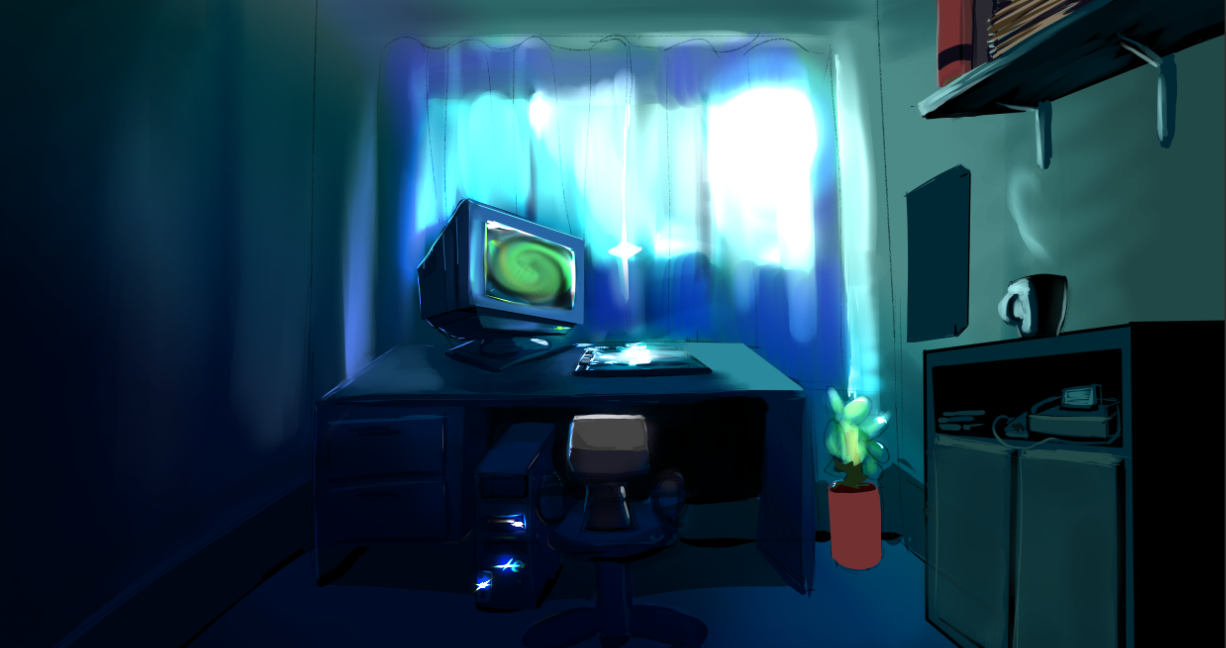This should be the last one, and hopefully it will work.
I completely rewrote the billboard code to use the not-really-billboarding system I used in Lightbound, and it works well enough that it'll make the game playable (I hope).Download Patch 1.3BNote: Only for ATI users, unless the nVidia users want their billboards to look slightly odd yet just about good enough to play with. Your choice.You need the full game first if you haven't got it already: Here it isAnyway, I tried my hand at modeling a character for the game. Here's the net result after an hour: I then ran up against a wall: I rigged the model, assigned the vertex groups carefully… then watched the whole thing deform weirdly when I tried to move bones. I probably should change the vertex weight and perhaps manually assign the groups instead of using the weight-paint option. Meh. Dunno. I'm not a 3D modeler. ^\_(o_o)_/^Anyway, I updated GIMP yesterday to 2.8…. and I hate it. They downgraded the appearance, made it take twice as long to load, removed my most-used brushes (The simple circle ones, 1, 3, 5 and 10), and split the save file dialogue into two separate ones (Export and Save).On the plus side, Python scripts ^^I took an old image I had sketched out in 2010, and finished it off:
I then ran up against a wall: I rigged the model, assigned the vertex groups carefully… then watched the whole thing deform weirdly when I tried to move bones. I probably should change the vertex weight and perhaps manually assign the groups instead of using the weight-paint option. Meh. Dunno. I'm not a 3D modeler. ^\_(o_o)_/^Anyway, I updated GIMP yesterday to 2.8…. and I hate it. They downgraded the appearance, made it take twice as long to load, removed my most-used brushes (The simple circle ones, 1, 3, 5 and 10), and split the save file dialogue into two separate ones (Export and Save).On the plus side, Python scripts ^^I took an old image I had sketched out in 2010, and finished it off: Well, back to finding things to do during my weekend…
Well, back to finding things to do during my weekend…
I am curious now - how was the billboarding implemented and how is it implemented now? What was it that video cards don't seem to agree on?
Formerly, I implemented it by requesting the GL_MODELVIEW matrix from the card after the projections for the camera had been calculated and fed into it.
I then used portions of the view matrix to form an Up vector and a Right vector. The system I am now using uses the precalculated projection vector, and formulates a delta set for the X and Z coordinates of the billboard plane.It isn't very accurate, but that can be fixed by finding the cross product between the player view ray and the calculated ray to the player from the object been drawn.What the ATI cards seem to do is fill the matrix differently that expected. I had a lot of trouble trying to find some solid Information on the problem…